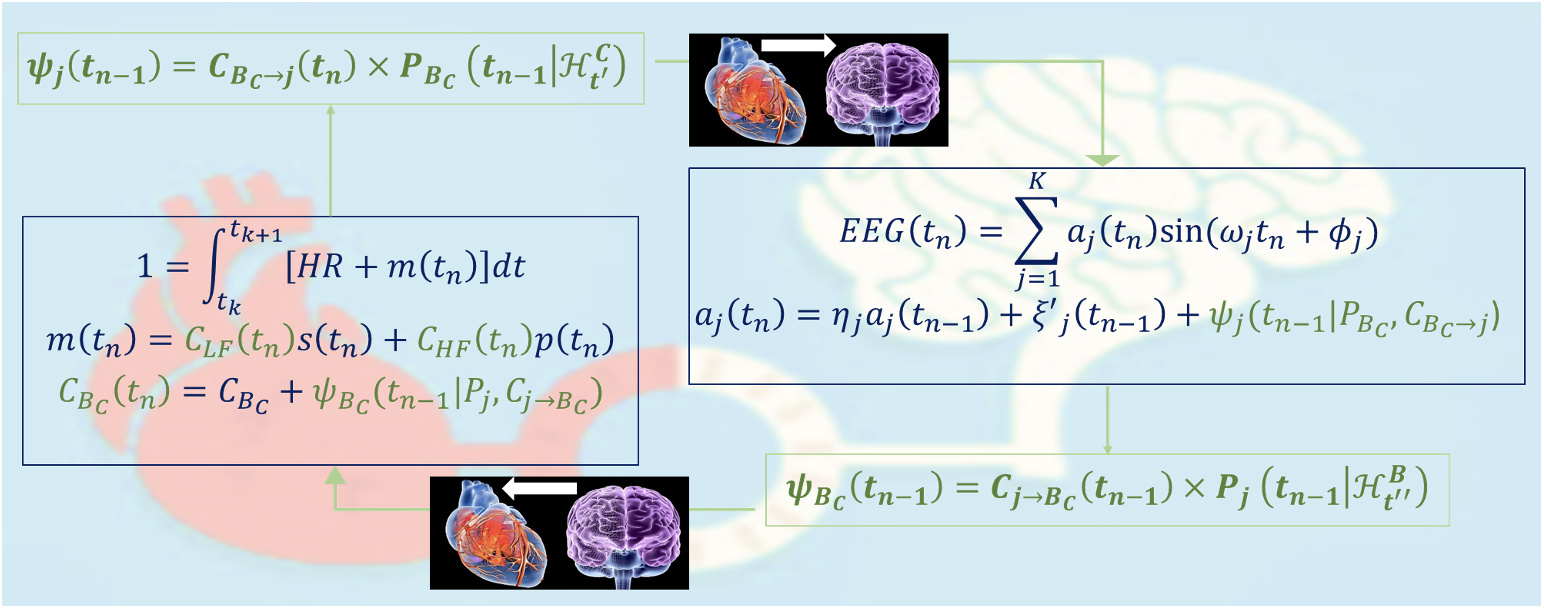Through their dynamical interplay, the brain and the heart ensure fundamental homeostasis and mediate several physiological functions as well as their disease-related aberrations. Indeed, while clinical evidence points to the functional interplay between brain and body, a solid comprehensive data modelling/processing framework linking the very different physiological dynamics but bound to the same systemic biological responses despite time-scale differences is the main purpose of this research activity. In this context, our research activity is currently focusing on:
- Development of new computational models of functional brain-heart interplay dynamics
- The study of functional brain-heart interaction using synchronized EEG/fMRI series and heartbeat dynamics
- Development of novel Brain-Heart Computer Interfaces, also for affective computing and neurorehabilitation applications
Exploitation of state-of-the-art brain-heart interplay metrics in clinical scenarios, such as neuroscience, neurocardiology, psychiatry, neurology, and clinical psychology.

Candia-Rivera, D, et al. "The Role of Electroencephalography Electrical Reference in the Assessment of Functional Brain–Heart Interplay: From Methodology to User Guidelines". Journal of Neuroscience Methods (2021): 109269.
Catrambone, V, et al. "Intensification of functional neural control on heartbeat dynamics in subclinical depression".Translational Psychiatry 11.1 (2021): 1-10.
Catrambone, Vincenzo, et al. "Toward brain–heart computer interfaces: a study on the classification of upper limb movements using multisystem directional estimates". Journal of Neural Engineering 18.4 (2021): 046002.
Valenza, Gaetano, et al. "Uncovering complex central autonomic networks at rest: a functional magnetic resonance imaging study on complex cardiovascular oscillations". Journal of the Royal Society Interface 17.164 (2020): 20190878.
Catrambone, V, et al. "Time-resolved directional brain–heart interplay measurement through synthetic data generation models". Annals of biomedical engineering 47.6 (2019): 1479-1489.
Valenza, G, et al. "Combining electroencephalographic activity and instantaneous heart rate for assessing brain–heart dynamics during visual emotional elicitation in healthy subjects". Philosophical Transactions of the Royal Society A: Mathematical, Physical and Engineering Sciences 374.2067 (2016): 20150176.

